Today’s Current Affairs: 24th October 2025 for UPSC IAS exams, State PSC exams, SSC CGL, State SSC, RRB, Railways, Banking Exam & IBPS, etc
Table of Contents
47th ASEAN summit:
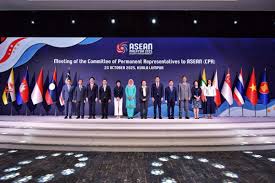
The Prime Minister decided not to travel to Malaysia to attend the 47th ASEAN summit and will attend it virtually.
- Association of Southeast Asian Nations (ASEAN) is an inter-governmental regional organisation formed to promote political, economic, and security cooperation among Southeast Asian nations.
- Established in 1967 with the signing of the Bangkok Declaration, its founding members were Indonesia, Malaysia, the Philippines, Singapore, and Thailand.
- ASEAN currently has 10 member countries: Indonesia, Malaysia, the Philippines, Singapore, Thailand, Brunei, Vietnam, Laos, Myanmar, and Cambodia.
- Headquarters: Jakarta, Indonesia
- The ASEAN Community comprises three pillars: the Political-Security Community, the Economic Community and the Socio-Cultural Community.
- Two of its core operating principles are consensual decision-making and noninterference in the internal affairs of its members.
- In line with ASEAN centrality, ASEAN sees itself as a platform for intergovernmental cooperation throughout the entire Asia-Pacific.
- The ASEAN Summit is held annually, where member states discuss regional developments and set strategic policy directions. It is chaired by a rotating presidency.
- The ASEAN Coordinating Council (ACC) monitors the implementation of agreements and decisions, ensuring alignment across the member states.
- The ASEAN Secretariat, located in Jakarta, acts as the administrative body supporting and facilitating ASEAN’s initiatives, coordination, and documentation.
- The ASEAN Regional Forum (ARF) is a key platform for dialogue on political and security issues involving both member countries and external partners.
- India joined the ARF in 1996, marking its formal inclusion in ASEAN-led security dialogue mechanisms.
National Means cum Merit Scholarship Scheme: In News
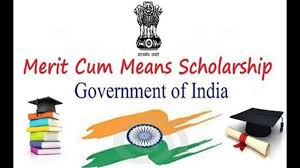
The State Councils of Educational Research and Training (SCERTs) recently released the application forms for the National Means cum Merit Scholarship Scheme (NMMS) for various states.
- It is a Centrally Sponsored Scheme launched in May, 2008.
- Objective is to award scholarships to meritorious students of economically weaker sections to arrest their dropout at class VIII and encourage them to continue the study at the secondary stage.
- NMMSS is on the National Scholarship Portal (NSP), a one-stop platform for scholarship schemes given to students.
- One lakh fresh scholarships are awarded by the Ministry of Education to selected students every year for study in classes from IX to XII in recognized Government, Government-aided, and local body schools.
- There is a quota of scholarships for different states/UTs.
- The amount of scholarship is 12000/- per annum (Rs. 1000/- per month) per student.
- These scholarships are disbursed directly into the bank accounts of selected students by electronic transfer.
- Students whose parental income from all sources is not more than Rs. 350,000/- per annum.\
- The students must have a minimum of 55% marks or an equivalent grade in the Class VII examination (relaxable by 5% for SC/ST students).
- The students should be studying as regular students in a Government, Government-aided and local body school.
- The students studying in the Navodaya Vidyalaya Samiti (NVS), Kendriya Vidyalaya Sangathan (KVS), and residential schools are not eligible for the scholarships under the NMMSS.
- There is reservation as per State Government norms.
- Each State and UT conducts its own test to select students for awarding the National Means-cum-Merit Scholarship. The test is conducted at the stage of class VIII.
- The awardees should get a minimum of 60% marks in Class X for continuation of scholarship (relaxable by 5% for SC/ST candidates) in the next higher classes.
- For continuing the scholarship in class X and XII, the awardees should get a clear promotion from class IX to class X and from class XI to class XII in the first attempt.
Barnawapara Wildlife Sanctuary:
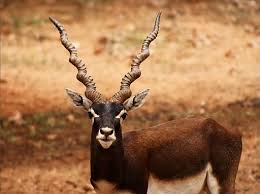
After being declared locally extinct for about 50 years, the blackbuck has made a remarkable comeback at Barnawapara Wildlife Sanctuary in Chhattisgarh thanks to a focused five-year revival plan.
- It is located in the northern part of the Mahasamund district of Chhattisgarh.
- It is named after the Bar and Nawapara forest villages, which are in the heart of the sanctuary
- It is spread over an area of 245 sq. km.
- The tributaries of Mahanadi are the source of water in the region. The River Balamdehi forms the western boundary, and the Jonk River forms the northeastern boundary of the sanctuary.
- The flora chiefly comprises tropical dry deciduous forest, with Teak, Sal, Bamboo and Terminalia being the prominent trees.
- Other major plants found in the sanctuary include Semal, Mahua, Ber, and Tendu.
- It is home to neelgai, wild boar, tigers, leopards, Indian bison, porcupines, pythons, antelopes, sambhar and cheetal, along with 150 species of birds, including parrots, blackbucks, herons, egrets, peafowl, etc.
Hyunmoo-5 Missile:

South Korea is ready to deploy its ‘monster missile’ Hyunmoo 5 at the end of the year marking a significant conventional arsenal upgrade against its northern counterpart in the Korean peninsula.
- It is a ballistic missile developed by South Korea.
- It is designed for deep penetration strikes with a massive conventional warhead capable of destroying heavily fortified underground targets.
- It is part of South Korea’s Korean Massive Punishment and Retaliation (KMPR) framework, which is designed to deter North Korean aggression without the use of nuclear weapons.
- It was officially unveiled in October 2024.
- It has been dubbed as the “monster missile” for its size, Hyunmoo 5 weighs around 36 tonnes.
- It can carry an eight-tonne warhead.
- Its range is set to vary from 600 km to more than 5,000 km, depending on payload.
- Its design features a payload composed of heavy metals, optimized to destroy bunkers or command centers located at great depth.
- It has the capability to destroy fortified underground facilities buried over 100 meters deep.
- In its descending phase, the missile can reach speeds close to Mach 10.
- It is capable of being launched from a mobile platform.
Calcium Carbide:
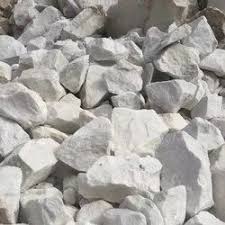
More than 60 people, primarily children, were hospitalized in Bhopal following severe injuries sustained from the use of makeshift “calcium carbide guns” during Diwali celebrations.
- Calcium Carbide is a compound with the chemical formula CaC2.
- It is a grayish-black lump or crystalline powder with a garlic-like odor.
- It is manufactured by heating a lime and carbon mixture to 2000 to 2100°C (3632 to 3812°F) in an electric arc furnace.
- It is primarily known for its use in the production of acetylene gas through hydrolysis.
- Calcium carbide reacts vigorously with water to produce acetylene Acetylene is a colourless, odourless, extremely flammable gas.
- It is used as a reducing agent and in steel manufacturing and metal cutting.
- Several countries use calcium carbide as an artificial ripening agent.
- It can cause serious health issues such as dizziness, frequent thirst, irritation, weakness, difficulty in swallowing, vomiting, skin ulcers, etc.
- Additionally, acetylene gas is equally hazardous to those handling it.
- There are chances that calcium carbide may come in direct contact with fruits during application and leave residues of arsenic and phosphorus on fruits.
- It is banned under the Prevention of Food Adulteration Rules, 1955, and also under the Food Safety and Standards (Prohibition and Restrictions on Sales) Regulations, 2011, made thereunder.
Fibromyalgia:
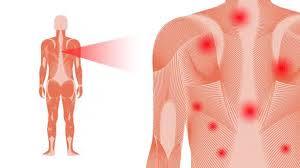
Fibromyalgia condition is often misunderstood, but it is real and is believed to affect 2 to 3% of the population globally.
- Fibromyalgia is a long-term (chronic) health condition that causes pain and tenderness in the muscles and soft tissues of the body.
- It is often accompanied by fatigue, sleep disturbances, memory issues and mood problems such as stress, anxiety and depression.
- It causes musculoskeletal pain and fatigue.
- The cause of fibromyalgia is not known, but studies show that people with the disorder have a heightened sensitivity to pain, so they feel pain when others do not.
- People with fibromyalgia usually experience symptoms that come and go in periods called flare-ups.
- The two most common symptoms of fibromyalgia are pain and fatigue. Other symptoms include,
- Headaches and migraines, digestive problems such as diarrhoea and constipation, restless leg syndrome, as well as face and jaw pain such as temporomandibular jaw disorders.
- While there is no cure for fibromyalgia, a variety of medications can help control symptoms.
- Treatment typically involves a combination of exercise or other movement therapies, psychological and behavioural therapy, and medications.
JAIMEX 2025:

Indian Naval Ship (INS) Sahyadri participated in the Sea phase of JAIMEX-25 (Japan India Maritime Exercise).
- It is a maritime exercise between India and Japan.
- It underscores the strong and burgeoning Navy-to-Navy interactions that underpin the ‘Special Strategic and Global Partnership’established between India and Japan in 2014.
- This partnership is a crucial pillar for ensuring peace and stability in the Indo-Pacific maritime domain.
- It involved two phases:
- Sea phase included advanced Anti-Submarine Warfare and missile defence drills, enhancing interoperability by undertaking flying operations and underway replenishment.
- Harbour Phase at Yokosuka includes engagement in a multitude of professional and cultural exchanges, cross-deck visits, collaborative operational planning, sharing of best practices,
- The Indian Navy and JMSDF have been at the forefront of this growing partnership with a shared vision of a free, open, and inclusive Indo-Pacific region.
- Other bilateral exercises between India and Japan: Malabar exercise(Naval Exercise), ‘Veer Guardian’ (Air Force), and Dharma Guardian (Army).
Kashmir’s first Chrysanthemum Garden
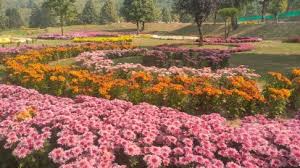
Kashmir’s first Chrysanthemum garden was opened for tourists.
- Chrysanthemums are a genus (Chrysanthemum) of about 30 species of perennial flowering plants in the family Asteraceae.
- It is native to Asia and northeastern Europe.
- Chrysanthemum is a perennial herbaceous plant that blooms in autumn.
- The species of Chrysanthemum grows to 50-150 cm tall, with deeply lobed leaves and large flowerheads, white, yellow or pink in the wild species.
- Required climatic Conditions for Chrysanthemum
- It is native primarily to subtropical and temperate areas.
- Tropical and subtropical climatic conditions are ideal.
- However, the best temperature for growing chrysanthemum is 20-28 degree for day and 15-20 degree Celsius for night.
- Well drained red loamy soil with pH of 6 to 7.
- It is commonly used as an herbal treatment for hypertension and is said to help treat fevers, headaches, and inflammation.
Intrusion Detection System:

The Northeast Frontier Railway (NFR) has successfully completed trial works of the Intrusion Detection System (IDS) in four key sections.
- The IDS initiative aims to strike a balance between operational efficiency and environmental protection.
- It is designed to protect wildlife and maintain operational efficiency, especially in areas where railway lines pass through forested and elephant-inhabited zones.
- It runs parallel to tracks at a distance of 10 metres.
- This initiative has been launched by the Northeast Frontier Railway (NFR) under the Ministry of Railways.
- It uses advanced optical fibre sensing technology to detect elephant movement near railway tracks,
- It generates real-time alerts for train drivers and control rooms to take timely preventive action.
- When elephants come close to the railway tracks, the vibrations generated by their movement are detected by the sensor cables, which then transmit signals to the control room.
Sevilla Forum on Debt:
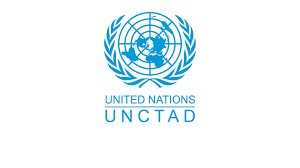
The Sevilla Forum on Debt was launched at the 16th United Nations Conference on Trade and Development (UNCTAD16) in Geneva.
- It is a Spain-led initiative launched at the 16th United Nations Conference on Trade and Development (UNCTAD16).]
- It is supported by UNCTAD and the UN Department of Economic and Social Affairs (DESA).
- Aim is to serve as an open and inclusive space for dialogue and action on sovereign debt reform.
- The new forum is one of the outcomes of the Fourth International Conference on Financing for Development (FfD4) and was launched as an initiative under the Sevilla Platform for Action.
- It brings together all stakeholders, creditors, borrowers, international financial institutions and academia on debt sustainability, management and innovative solutions.
United Nations Conference on Trade and Development:
- It is the UN’s leading institution dealing with trade and development.
- It is a permanent intergovernmental body established by the United Nations General Assembly in 1964.
- It provides economic and trade analysis, facilitates consensus-building and offers technical assistance to help developing countries use trade, investment, finance and technology for inclusive and sustainable development.
- Headquarter: Geneva, Switzerland.
- Reports published by the UNCTAD
- Trade and Development Report
- World Investment Report
- The Least Developed Countries Report
Mount Etna:
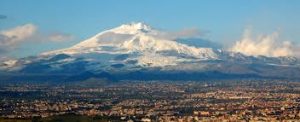
Researchers recently analyzed changes over time in the ratio of small earthquakes to bigger ones beneath Mount Etna and found a strong correlation with the volcano’s activity over the past 20 years.
- It is an active stratovolcano located on the island of Sicily in the Mediterranean Sea. (Sicily is a part of Italy.)
- It lies above the convergent plate margin between the African Plate and the Eurasian Plate.
- It is the tallest active volcano in Europe.
- It is the highest mountain in Italy south of the Alps.
- It is about 11,000 feet (3,350 meters) high.
- It covers an area of 1,190 sq.km. with a basal circumference of 140 km.
- The eruptive history of the volcano can be traced back 500,000 years, and at least 2,700 years of this activity has been documented.
- The ancient Greeks created legends about it.
- It is a UNESCO World Heritage Site.
Sabarimala Temple: President of India Visit

The President of India recently made a historic visit to the Lord Ayyappa temple in Sabarimala, becoming the first woman head of state to offer prayers at the renowned hilltop shrine.
- It is Located in the Western Ghats in the Pathanamthitta District of Kerala, the Sabarimala Sree Dharma Sastha Temple is an ancient temple dedicated to Lord Ayyappa.
- Ayyappa, also known as Dharma Shasta, is the son of Shiva and Mohini, the feminine form of Vishnu.
- The temple is situated on a hilltop amidst 18 hills at an altitude of 4,134 ft above sea level.
- It is surrounded by mountains and dense forests that are a part of the Periyar Tiger Reserve.
- It is not open throughout the year.
- It is one of the largest annual pilgrimage sites in the world, with an estimated 40 to 50 million pilgrims visiting the temple every year, especially during the annual Mandalam-Makaravilakku season.
- It is said that the pilgrims have to follow a 41-day vratham (austerity period) before going to Sabarimala.
- It is one of the few Hindu temples in India that is open to all faiths.
- There is a place near the temple, east of Sannidhanam (the abode of Lord Ayyappa), dedicated to Vavar (a Sufi and a close friend of Lord Ayyappa) which is called Vavaru Nada, an epitome of religious harmony.
- It showcases a beautiful blend of traditional Kerala and Dravidian architectural styles.
- The main temple stands on a 40 feet high plateau and consists of a sanctum sanctorum with a copper-plated roof and four golden finials, two mandapams, and a flagstaff.
- The main staircase to the Sabarimala Temple is made up of 18 sacred steps.
Sabarimala Case:
- Women in their ‘menstruating years’ (between 10 to 50 years) were customarily prohibited from entering the temple.
- In 2018, the Supreme Court ruled that the Sabarimala temple’s exclusion of women aged 10 to 50 was unconstitutional.
- The verdict triggered widespread protests and remains under review by a larger bench.
Indian Scops-Owl:
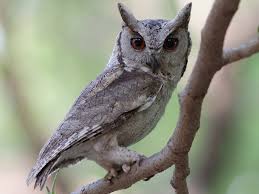
In a rare and remarkable discovery, birdwatchers recently recorded the first-ever sighting of the Indian scops owl near the Daroji Sloth Bear Sanctuary in Karnataka.
- Indian Scops-Owl is a small woodland owl species, native to the southern regions of Asia.
- Scientific Name: Otus bakkamoena
- It is found in India, Nepal, Pakistan, Sri Lanka, and Iran.
- It is found in a variety of habitats, including forests, scrublands, and agricultural areas.
- It is a non-migratory species and tends to stay in the same area throughout the year.
- It measures between 17-20 centimeters in height and has a wingspan of around 45 centimeters.
- Its body is stocky, with a round head and short tail.
- It has striking physical features, including its large, bright yellow eyes with black pupils.
- The feathers are soft and fluffy, providing insulation against the cool night air.
- The overall coloration of the owl’s feathers is a mixture of browns and greys, with intricate patterns of dark and light stripes and spots.
- A nocturnal hunter, the Indian Scops-Owl feeds predominantly on insect prey.
- Conservation Status: IUCN Red List: Least Concern.
Central Asian Mammals Initiative:
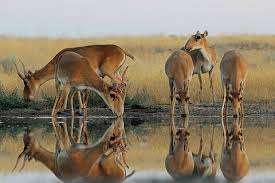
Representatives from a number of Central Asian countries have endorsed Central Asian Mammals Initiative that identifies priority transboundary conservation regions important for conserving seventeen iconic mammal species of the region.
- It was launched in 2014 at the 11th Meeting of the Conference of the Parties (COP11) to the Convention on the Conservation of Migratory Species of Wild Animals (CMS).
- It aims to reverse the population decline of 17 migratory mammal species in 14 Central Asian countries where these species live.
- CAMI presents a common framework to address major threats to the Central Asian migratory species.
- It currently covers 17 species including : Argali sheep, Asiatic cheetah, Asiatic wild ass, Bukhara deer, Eurasian lynx, gobi bear, goitered gazelle, kiang, Mongolian gazelle, Pallas’s cat, Persian leopard, Przewalski’s horse, saiga antelope, snow leopard, urial, wild camel, and wild yak.
The current Programme of Work (2021-2026) for CAMI initiative was adopted by CMS COP13.
Convention on the Conservation of Migratory Species:
- It is also known as the Bonn Convention, is an environmental treaty under the aegis of the United Nations Environment Programme.
- It provides a global platform for the conservation and sustainable use of migratory animals and their habitats.
- It was signed in Bonn, Germany, on 23 June 1979.
- It is the only global and UN-based intergovernmental organisation established exclusively for the conservation and management of terrestrial, aquatic and avian migratory species throughout their range.
- Activities by CMS Parties may range from legally binding treaties (called Agreements) to less formal instruments, such as Memoranda of Understanding.
- The Conference of Parties (COP) is the decision-making organ of this convention.
Anagyrus lopezi:
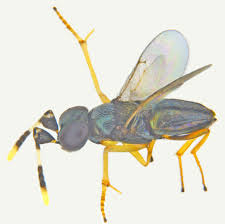
Two years after scientists from the National Bureau of Agricultural Insect Resources (NBAIR), released a tiny parasitic wasp Anagyrus lopezi into South India’s tapioca fields, the crop that once faced near devastation from an invasive pest is now thriving again.
- It is a tiny parasitic wasp which specifically targets the cassava mealybug.
- The wasp lays its eggs inside the pest, and the developing larvae consume it from within, naturally reducing mealybug numbers without harming other crops.
- The parasitoids spread naturally beyond the release points, up to 30–40 km, gradually bringing the mealybug population under control.
- It was imported from the International Institute of Tropical Agriculture (IITA), Benin, West Africa.
- Tapioca (Cassava) is a major horticulture crop cultivated in Tamil Nadu, Kerala and Puducherry.
- It is cultivated throughout the tropical world for its tuberous roots, from which cassava flour, breads, tapioca, a laundry starch, and an alcoholic beverage are derived.
- This crop can be cultivated up to an elevation of 1000 m.
- All parts of cassava/tapioca – leaves, stem, tuber and rind – contain the compounds called cyanogenic glucosides (CNGs).
Fiji became the 26th country to eliminate trachoma:
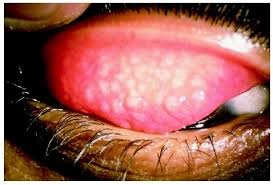
Fiji became the 26th country to eliminate trachoma as a public health problem.
- Trachoma is a bacterial infection caused by the bacterium Chlamydia Trachomatis which affects the eyes.
- It is contagious; spreading through contact with the eyes, eyelids, nose or throat secretions of infected people, if left untreated it causes irreversible blindness.
- It is found in communities who are living in poor environmental conditions.
- Signs and symptoms of early stages of trachoma include:
- Red and irritated eyes.
- Swollen eyelids.
- Blurred vision.
- Watery discharge from the eyes.
- Discharge from the nose.
- The two drugs recommended for trachoma are azithromycin and an ointment made with tetracycline.




